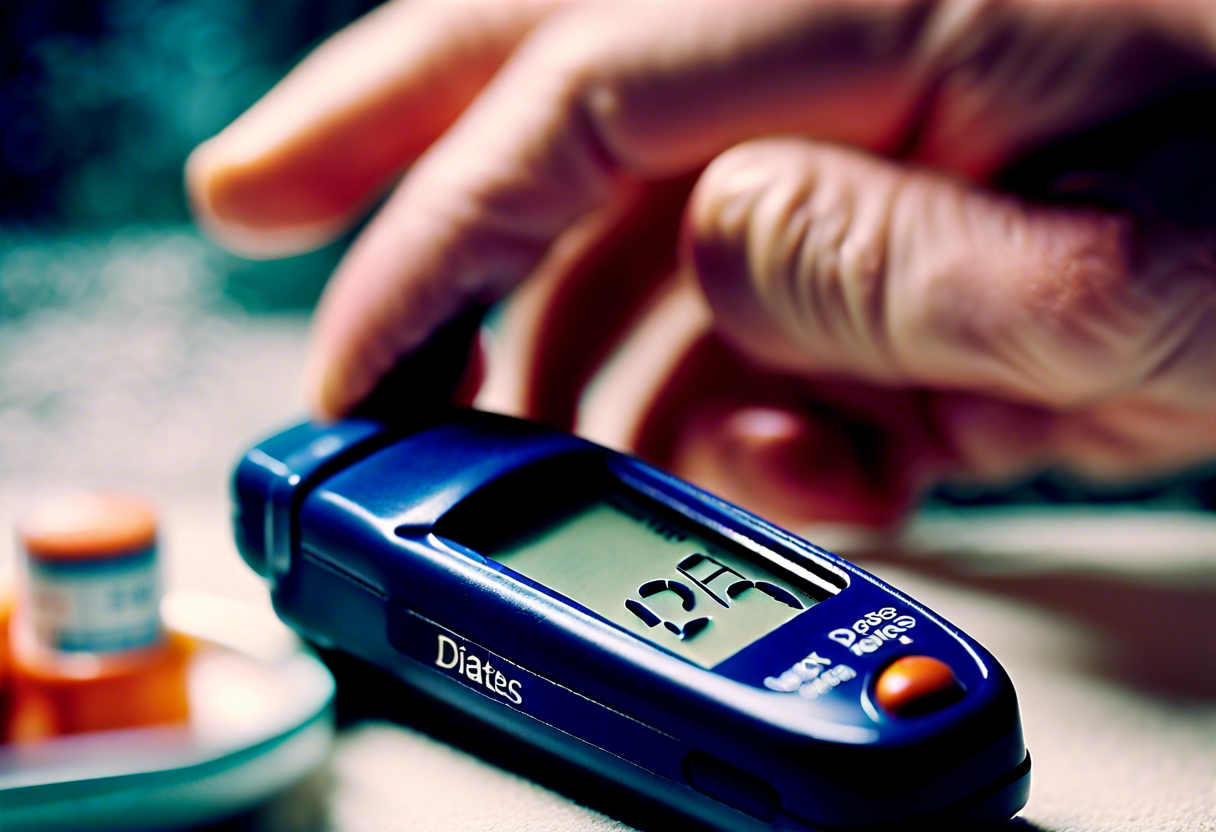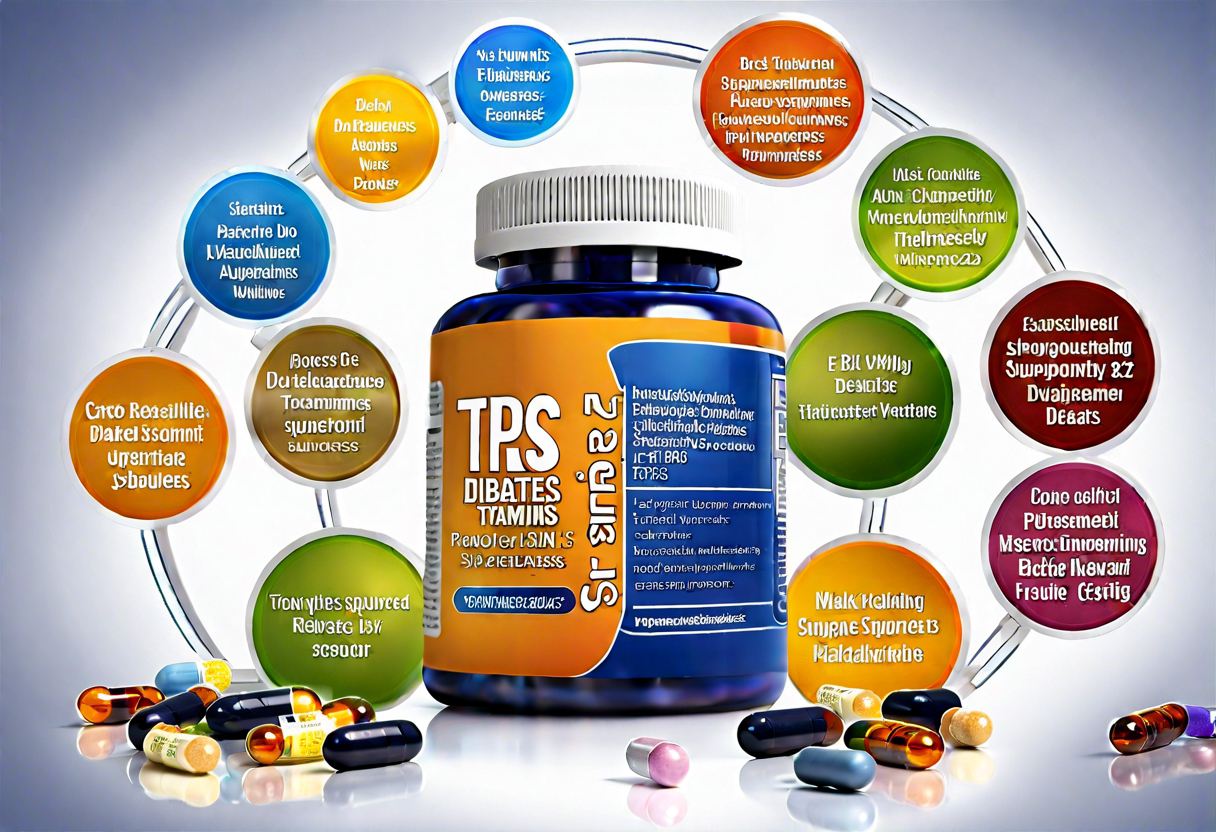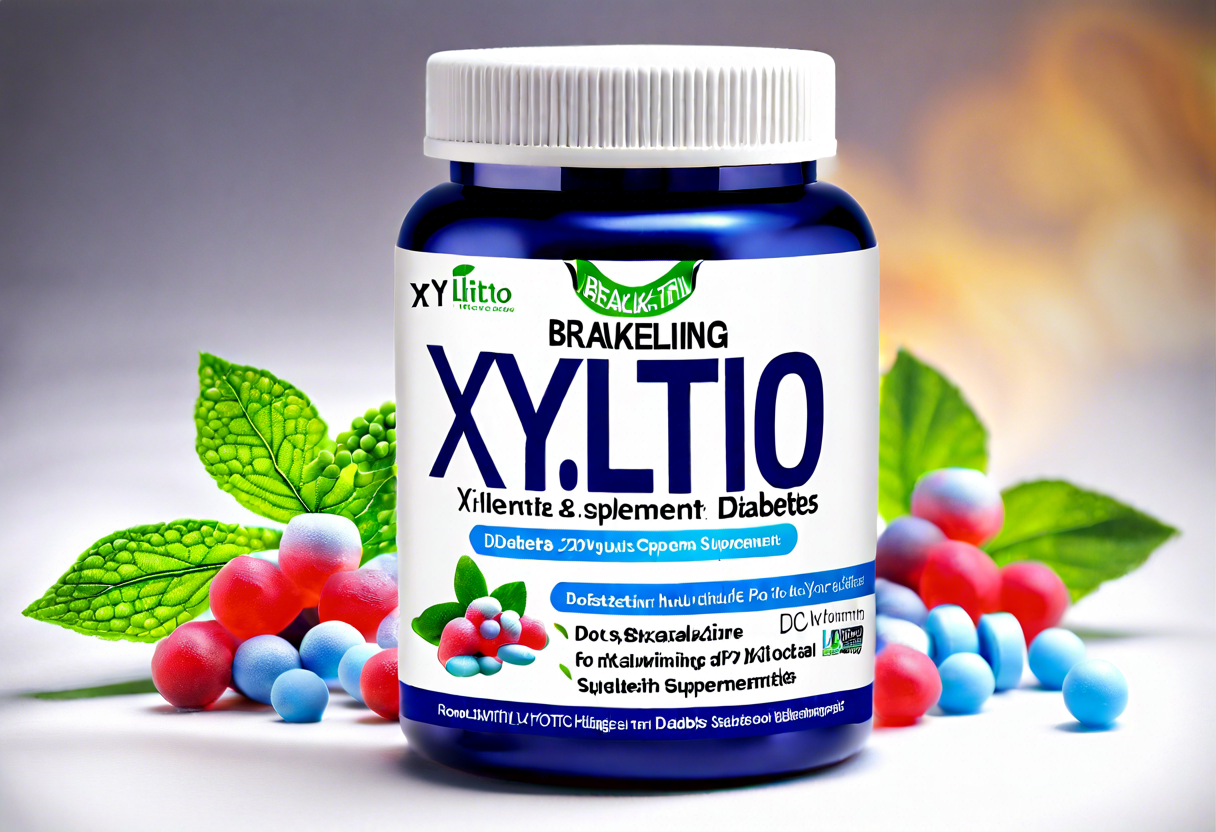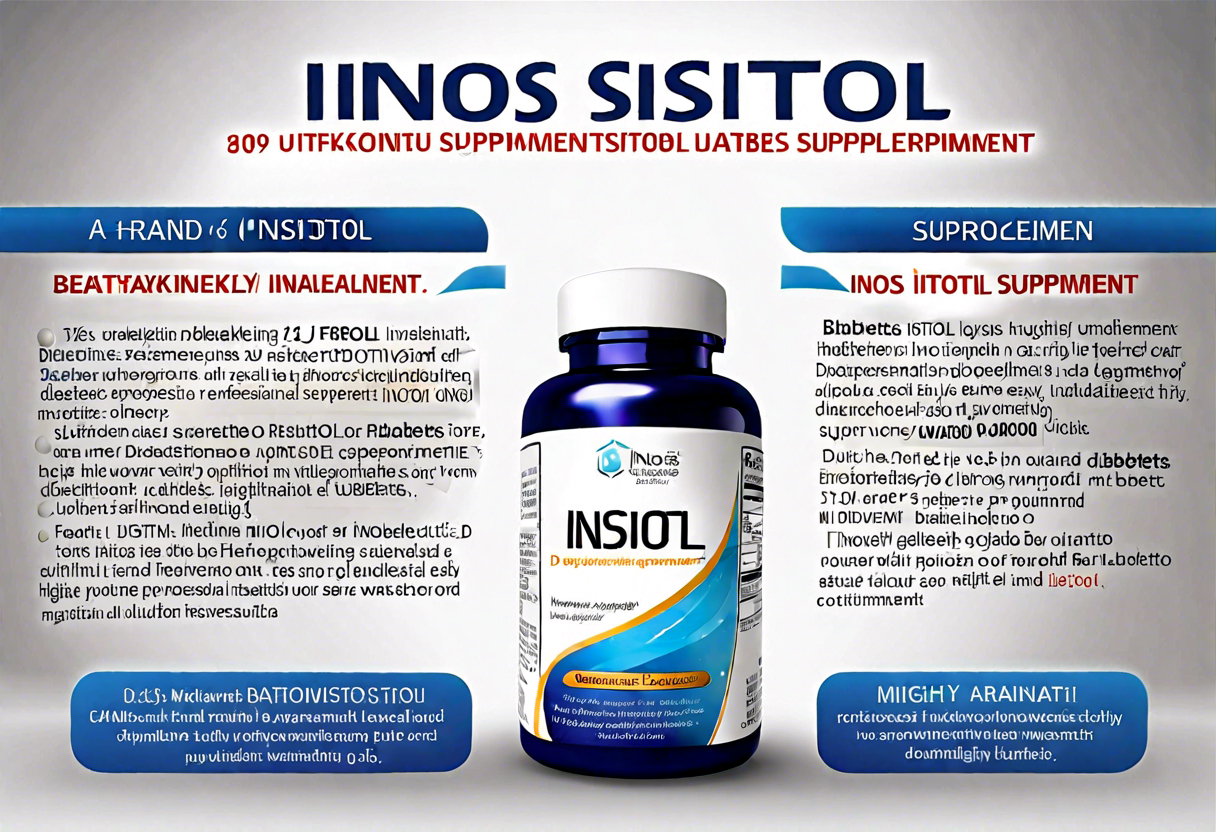Early Signs of Reversing Type 2 Diabetes
Living with type 2 diabetes can be challenging, but it’s important to remember that this condition is reversible. By making the right lifestyle changes and adopting healthier habits, you can take control of your diabetes and even reverse it. Recognizing the early signs of reversing type 2 diabetes is crucial as it can indicate that your efforts are paying off and your health is improving. Here are some early signs to look out for:
-
Improved Blood Sugar Levels: One of the first signs that your diabetes may be reversing is a noticeable improvement in your blood sugar levels. Regular monitoring of your blood glucose levels will help you track your progress. Over time, you may start to see your numbers stabilizing and even returning to normal ranges. This indicates that your body is becoming more insulin sensitive and better able to regulate blood sugar.
-
Increased Energy Levels: As your diabetes begins to reverse, you may notice a boost in your energy levels. This is because your body is becoming more efficient at utilizing glucose for energy. With improved blood sugar control, you’ll experience fewer energy crashes and feel less fatigued throughout the day. You may find yourself having more energy to engage in physical activity, which further supports diabetes reversal.
-
Weight Loss: Reversing type 2 diabetes often goes hand in hand with significant weight loss. When you adopt a healthier lifestyle, including a balanced diet and regular exercise, shedding excess pounds becomes achievable. Losing weight can have a profound impact on insulin sensitivity, making it easier for your body to process glucose. A reduction in body weight is a positive sign that your efforts to reverse diabetes are working.
-
Reduced Medication Dependency: Another promising sign of diabetes reversal is a reduction in the need for medication. As you make positive changes to your lifestyle, such as improving your eating habits and increasing physical activity, you may find that your medication requirements decrease over time. This is because your body is regaining its ability to control blood sugar naturally. However, it’s crucial to work closely with your healthcare provider when adjusting your medication regimen.
-
Improved A1C Levels: The hemoglobin A1C test is commonly used to monitor long-term blood sugar control. As you work towards reversing type 2 diabetes, you can expect to see improvements in your A1C levels. Over time, your A1C levels should start to decrease, indicating that your blood sugar has been consistently well-managed. This is a positive sign that your diabetes is heading in the right direction.
Remember, reversing type 2 diabetes is a gradual process that requires patience and commitment. It’s essential to continue following a healthy lifestyle and regularly consult with your healthcare team to monitor your progress. By recognizing and embracing these early signs of diabetes reversal, you can stay motivated and empowered on your journey towards better health and well-being.
Lifestyle Changes to Manage Type 2 Diabetes
Managing type 2 diabetes involves making certain lifestyle changes that can significantly improve your overall health and help in reversing the condition. By adopting a healthier lifestyle, you can effectively manage your blood sugar levels and reduce the risk of complications associated with diabetes.
One of the key lifestyle changes for managing type 2 diabetes is maintaining a healthy diet. Consuming a balanced and nutritious diet is crucial in managing blood sugar levels. Focus on incorporating whole grains, lean proteins, fruits, vegetables, and healthy fats into your meals. Avoid sugary and processed foods, as they can cause spikes in blood sugar levels. Meal planning and portion control are important factors in maintaining a healthy diet.
In addition to a healthy diet, regular physical activity is essential in managing type 2 diabetes. Engaging in regular exercise helps to improve insulin sensitivity and lower blood sugar levels. Aim for at least 150 minutes of moderate-intensity aerobic activity, such as brisk walking or cycling, per week. Strength training exercises, such as weightlifting, can also help to improve insulin sensitivity and promote weight loss.
Another important aspect of managing type 2 diabetes is maintaining a healthy body weight. Losing excess weight can greatly improve insulin sensitivity and blood sugar control. If you are overweight or obese, losing just 5 to 10% of your body weight can have a significant impact on your diabetes management.
Stress management techniques also play a role in managing type 2 diabetes. Stress can elevate blood sugar levels, so it is important to find healthy ways to manage and reduce stress. Engaging in activities like meditation, deep breathing exercises, or participating in hobbies can help to alleviate stress and improve your overall well-being.
In addition to these lifestyle changes, regular monitoring of your blood sugar levels is crucial. Checking your blood sugar levels regularly can help you understand how certain foods, activities, and medications affect your levels. This knowledge can empower you to make necessary adjustments to your lifestyle and medications to maintain optimal blood sugar control.
Making necessary lifestyle changes is vital in managing and reversing type 2 diabetes. Implementing a healthy diet, engaging in regular physical activity, maintaining a healthy weight, managing stress, and monitoring blood sugar levels are all important steps toward achieving better diabetes management and potentially reversing the condition. By taking control of your lifestyle, you can improve your overall health and well-being while managing your diabetes effectively.
The Role of Diet in Reversing Type 2 Diabetes
When it comes to managing and reversing Type 2 diabetes, one of the most crucial factors is diet. Making changes to what you eat can significantly impact your blood sugar levels and overall health. A healthy diet can help reduce insulin resistance, improve insulin sensitivity, and promote weight loss, all of which are key factors in reversing Type 2 diabetes.
1. Focus on Whole, Unprocessed Foods: Including plenty of whole, unprocessed foods in your diet is essential for managing Type 2 diabetes. These foods are rich in essential nutrients, fiber, and antioxidants, which can help regulate blood sugar levels. Incorporate foods such as fruits, vegetables, whole grains, lean proteins, and healthy fats into your meals.
2. Choose Low-Glycemic Foods: The glycemic index (GI) ranks foods based on their impact on blood sugar levels. Foods with a low-GI are slowly digested, causing a gradual rise in blood sugar levels. Opt for low-GI foods like legumes, oats, non-starchy vegetables, and whole fruits to maintain stable blood sugar levels.
3. Limit Added Sugars and Refined Carbohydrates: Added sugars and refined carbohydrates can cause a rapid spike in blood sugar levels. Avoid sugary beverages, processed snacks, and desserts. Instead, choose natural sweeteners like stevia or use moderate amounts of natural sugar alternatives like honey or maple syrup.
4. Include Lean Proteins: Protein is an important component of a diabetes-friendly diet as it helps stabilize blood sugar levels and promotes feelings of fullness. Include lean sources of protein such as poultry, fish, tofu, Greek yogurt, and legumes in your meals.
5. Watch Portion Sizes: Controlling portion sizes is crucial in managing Type 2 diabetes. Use smaller plates and be mindful of portion recommendations for different food groups. Avoid overeating and listen to your body’s hunger and fullness cues.
6. Stay Hydrated: Proper hydration is essential for overall health, including managing diabetes. Opt for water as your primary beverage and limit the consumption of sugary drinks.
7. Seek Professional Advice: Individuals with Type 2 diabetes can benefit from working with a registered dietitian or a healthcare professional experienced in diabetes management. They can provide tailored meal plans, educate you about carbohydrate counting, and guide you in making healthy food choices.
It is important to note that dietary changes should be made in consultation with healthcare professionals, especially if you are taking medication for your diabetes. Reversing Type 2 diabetes through diet requires a comprehensive approach that combines a healthy eating plan, regular physical activity, weight management, and medication management, if necessary. By making these changes, you can take control of your health and potentially reverse Type 2 diabetes.
The Role of Regular Physical Activity in Treating Type 2 Diabetes
Regular physical activity plays a vital role in the treatment and management of type 2 diabetes. Engaging in regular exercise can significantly help in reversing the progression of the disease and improving overall health. Physical activity helps to control blood sugar levels, enhance insulin sensitivity, reduce the risk of complications, and promote weight loss.
One of the key benefits of physical activity for individuals with type 2 diabetes is its ability to lower and regulate blood sugar levels. When muscles are active, they use glucose for energy, which helps to reduce the amount of sugar in the bloodstream. Regular exercise also improves insulin sensitivity, allowing the body to use insulin more effectively, resulting in better blood sugar control.
Furthermore, engaging in physical activity helps with weight management, which is crucial for individuals with type 2 diabetes. Excess weight and obesity are major risk factors for developing and worsening diabetes. Regular exercise helps to burn calories, reduce body fat, and maintain a healthy weight. Losing just a few pounds can make a significant difference in blood sugar levels and overall health.
Physical activity has also been shown to have a positive impact on cardiovascular health. Diabetes increases the risk of heart disease and stroke, but regular exercise can help lower blood pressure, improve blood circulation, and reduce the risk of cardiovascular complications. It also helps to increase good cholesterol levels (HDL) and decrease bad cholesterol (LDL) and triglyceride levels.
Engaging in physical activity doesn’t have to be complicated or time-consuming. It can be as simple as walking, swimming, cycling, or engaging in any activity that gets your heart rate up. The American Diabetes Association recommends at least 150 minutes of moderate-intensity aerobic activity per week, spread throughout the days. This can be achieved by breaking it down into smaller bouts of activity throughout the day.
Before starting any exercise program, it is essential to consult with a healthcare professional, especially for individuals with pre-existing conditions or complications. They can provide guidance on the most suitable activities and intensity levels based on individual circumstances.
Regular physical activity is a cornerstone of treating and managing type 2 diabetes. It helps to control blood sugar levels, improve insulin sensitivity, promote weight loss, and reduce the risk of complications. By incorporating regular exercise into daily routines, individuals with type 2 diabetes can take significant steps towards reversing the disease and improving their overall health and well-being.
Monitoring and Managing Blood Sugar Levels for Type 2 Diabetes Reversal
When it comes to reversing type 2 diabetes, monitoring and managing blood sugar levels play a crucial role. By keeping a close eye on your blood glucose levels, you can track your progress and make necessary adjustments to your treatment plan. Here are some effective strategies for monitoring and managing blood sugar levels.
Regular Blood Sugar Testing
Regular blood sugar testing is one of the essential steps in managing type 2 diabetes. It allows you to monitor how well your body is processing glucose and helps you make informed decisions about your diet, physical activity, and medication.
Typically, you will use a blood glucose meter to measure your blood sugar levels. This device requires a small sample of blood, usually obtained by pricking your finger. By following your healthcare provider’s recommendations on when and how often to test, you can gain valuable insights into your body’s response to different lifestyle choices.
Understanding Target Ranges
To effectively manage blood sugar levels, it’s crucial to understand your target ranges. Your healthcare provider will guide you on what levels are considered normal and what ranges to aim for. Typically, the American Diabetes Association recommends the following target ranges:
- Before meals (fasting): 80-130 mg/dL (4.4-7.2 mmol/L)
- 1-2 hours after meals: Less than 180 mg/dL (10.0 mmol/L)
Keep in mind that target ranges may vary depending on your specific circumstances. Working closely with your healthcare provider will help you establish personalized goals for blood sugar control.
Healthy Eating Habits
Adopting healthy eating habits is vital for managing blood sugar levels. Focus on incorporating a balanced diet that includes a variety of nutrient-rich foods. Opt for complex carbohydrates, such as whole grains, fruits, and vegetables, which have a slower impact on blood sugar levels.
Additionally, controlling portion sizes can help prevent blood sugar spikes. Use measuring cups or a food scale to ensure accurate serving sizes. This way, you can keep your carbohydrate intake consistent and better manage your blood sugar levels.
Regular Physical Activity
Regular physical activity is not only beneficial for overall health but also plays a significant role in managing blood sugar levels. Exercise helps your body utilize glucose more effectively, thereby lowering blood sugar levels.
Engage in at least 150 minutes of moderate-intensity aerobic exercise, such as brisk walking, swimming, or cycling, per week. Consult with your healthcare provider before starting any exercise regimen to ensure it aligns with your current health condition.
Medication Adherence
In some cases, medication may be necessary to manage blood sugar levels effectively. If prescribed medication, it is essential to take it as directed by your healthcare provider. Adherence to medication is critical in achieving and maintaining stable blood sugar levels.
Furthermore, it’s important to communicate openly with your healthcare provider about any concerns or difficulties you may face with your medication. They can offer guidance and make adjustments to your treatment plan if necessary.
Monitoring and managing blood sugar levels is a fundamental aspect of reversing type 2 diabetes. Regular blood sugar testing, understanding target ranges, adopting healthy eating habits, engaging in regular physical activity, and adhering to medication when necessary are all valuable strategies in achieving optimal blood sugar control. By incorporating these practices into your daily routine, you can take significant steps towards successfully reversing type 2 diabetes and improving your overall health.
Conclusion
Recognizing the early signs of reversing type 2 diabetes is crucial for effectively managing and even reversing this chronic condition. Making lifestyle changes, such as adopting a healthy diet and engaging in regular physical activity, can significantly impact blood sugar levels and promote overall well-being. By implementing these changes, individuals with type 2 diabetes can regain control of their health and potentially reverse the progression of the disease.
One of the most important factors in reversing type 2 diabetes is making lifestyle changes. This includes modifying dietary habits and incorporating regular exercise into daily routines. By opting for a diet that is rich in whole foods, low in refined sugars and carbohydrates, and high in fiber, individuals can effectively manage their blood sugar levels. This can lead to significant improvements in insulin sensitivity and blood glucose control, ultimately reversing the course of type 2 diabetes.
Regular physical activity is another crucial component in managing and reversing type 2 diabetes. Engaging in aerobic exercises, strength training, and even simple activities such as walking or cycling can help improve insulin sensitivity and promote weight loss. Physical activity not only aids in lowering blood sugar levels but also reduces the risk of developing complications associated with diabetes. By incorporating exercise into their daily routine, individuals can experience the early signs of type 2 diabetes reversal and improve their overall health.
Monitoring and managing blood sugar levels are essential in the journey to reverse type 2 diabetes. Regularly checking blood glucose levels allows individuals to track their progress and make necessary adjustments to their diet and lifestyle. Additionally, staying aware of any fluctuations in blood sugar levels will enable individuals to identify potential triggers and take proactive measures to maintain stable levels. By actively managing their blood sugar, individuals can experience the early signs of type 2 diabetes reversal and prevent further complications.
It is important to note that reversing type 2 diabetes is a gradual process that requires commitment and persistence. While early signs of reversal can be experienced within weeks or months of implementing lifestyle changes, it is crucial to continue following a healthy diet and exercise regimen to sustain long-term improvements. Consulting with healthcare professionals, such as registered dietitians or diabetes educators, can also provide valuable guidance and support throughout the journey to reverse type 2 diabetes.
Recognizing the early signs of reversing type 2 diabetes is essential for individuals looking to effectively manage and even reverse this chronic condition. By making lifestyle changes, such as adopting a healthy diet and engaging in regular physical activity, individuals can significantly impact their blood sugar levels and overall well-being. Monitoring and managing blood sugar levels provide valuable insights into progress and help maintain stability. With commitment and persistence, individuals can experience the early signs of type 2 diabetes reversal and take control of their health.









